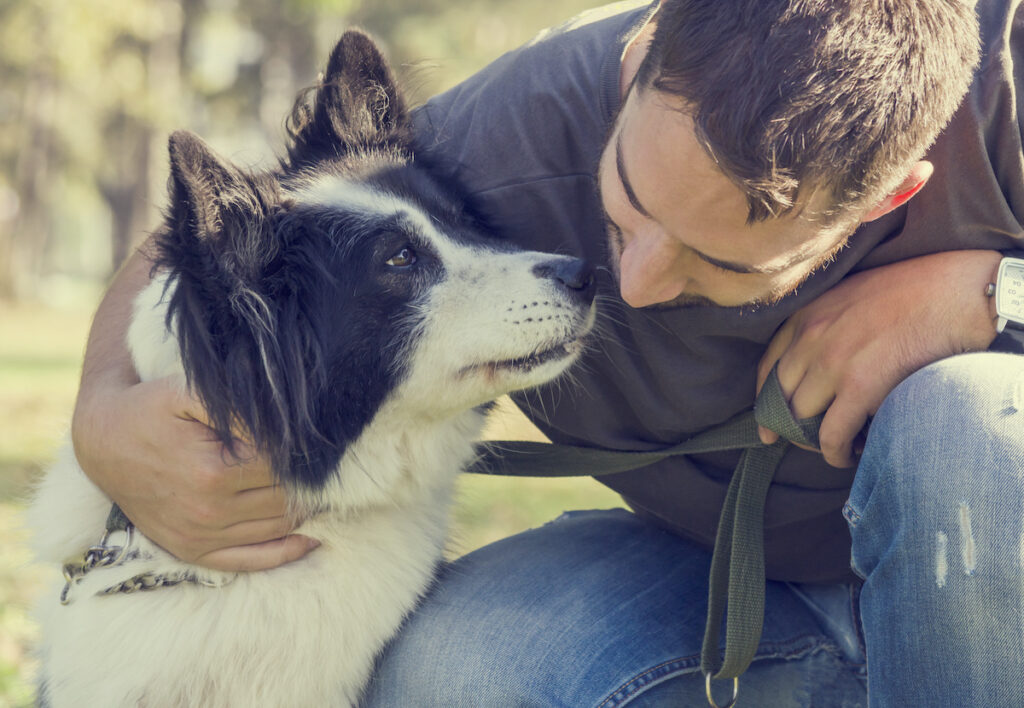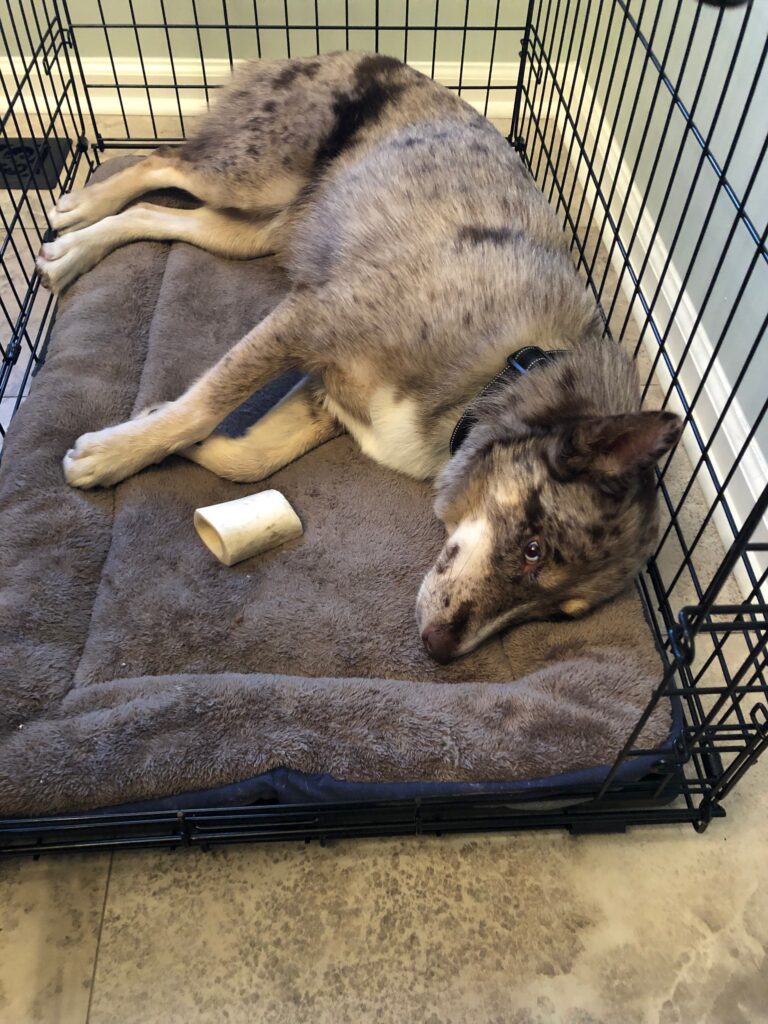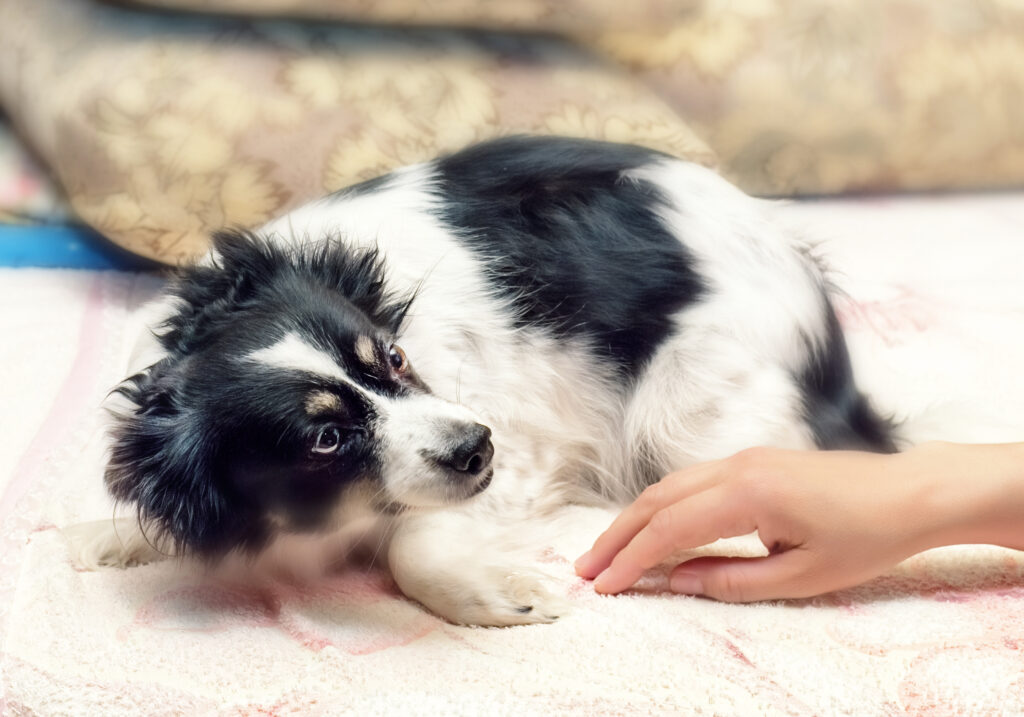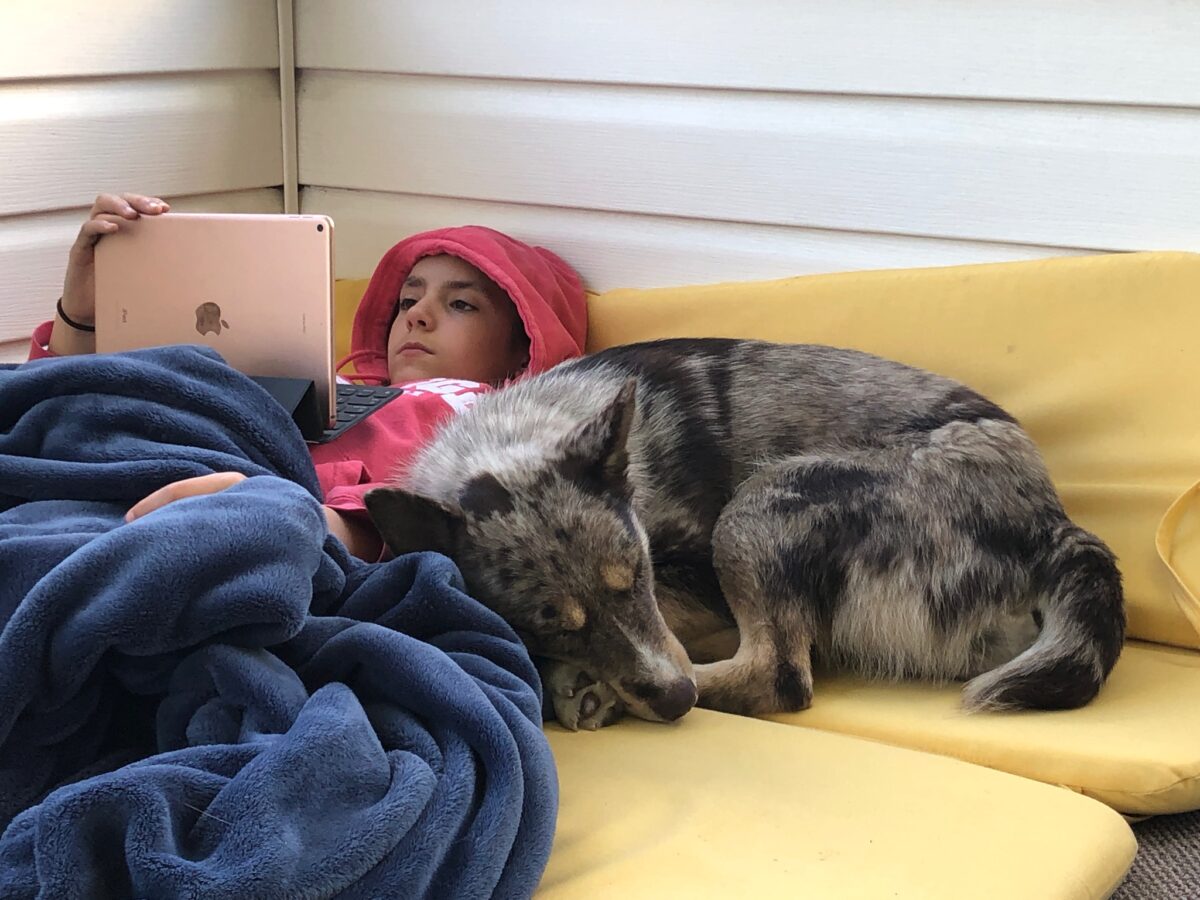When you rescue a dog, there’s very little information you (or the rescue) might know about its background. Regardless of the dog’s history, there are many things you can do to help your new dog become a wonderful, loving family pet.
Where Did Your Rescue Dog Come From?
Some rescue dogs are in rescue through no fault of their own. The best case scenarios for a pet to be up for adoption are because there is no one to care for a dog whose owner has passed away or been relocated to an assisted living home. Sometimes a beloved dog is up for adoption because the family has endured financial troubles and they no longer can care for it. In these cases, you might be fortunate enough to adopt a dog that has good house manners, a loving personality, and is good with children and adults alike.

Too often and sadly, dogs that are up for adoption have been through harsh and dangerous situations including abandonment, abuse or neglect, injury, or illness. The dog may have spent years in a puppy mill as a “producer” and no longer is useful to the people who run those facilities. It could be a combination of these situations.
Whether your rescue dog comes to you from a “good background” or more dire circumstances, there are stages of adaptation that all dogs go through when adopted into a new home. Depending on the dog, how long it takes him or her to move through each stage can vary–and a lot of that also depends on YOU.
 The YOU Factors that Make a Rescue Dog a Great Pet
The YOU Factors that Make a Rescue Dog a Great Pet
The factors that you have the most control over in helping the a new rescue acclimate to your home include:
- Researching the rescues where you can adopt a dog.
- Preparing your home and family members before the dog arrives.
- Knowing the importance of decompression.
- Being a Confident leader who delivers Consistent and Caring training.
Researching rescues in your local community (or beyond) is important.
Not only will the rescue have you complete a lengthy application for a dog,you have the right to interview the rescue. Read their policies and procedures for how they acclimate new dogs within the rescue and their fostering system. Some rescues do a great job with preparing a rescued animal for adoption. They may take the time to assess the personality, correct problem behaviors, house train and tend to injury or illness before even posting a dog for adoption. Others move dogs through the rescue without much attention to anything other than basic care and attention to injuries. Some rescues specialize in “the worst cases” medically or behaviorally. Pay attention to these details and make a short list of the rescues you feel you will find a best match dog for your family. Talk with a vet if you are unsure where to rescue.
Preparing your home for a new rescue is essential before the dog arrives.
Even if you think it will be weeks before you find a just-right-fit rescue dog, you need to decide:
- Where the dog will sleep and eat
- What areas of the home will be off-limits and how you’ll arrange this
- What vet you will use for routine care
- How you will exercise the dog and how often
- Who will care for the dog when you are away or ill
- What your budget is for routine medical care, food, and boarding
Not only are these questions that rescues will ask you, planning for them is essential to reducing your stress, and the dog’s stress, once you bring the animal home, especially if it happens faster than you expected.
 Do Not Dodge Dog Decompression
Do Not Dodge Dog Decompression
Dog decompression is a crucial topic, one we’ll come back to again in future blog posts, and one that should never be overlooked even if you think you have brought home the “perfect dog” from an ideal prior home situation. You just never know: Dogs are masters at holding back until you have proven to them that they can trust you. Only then can that amazing canine-human bond begin to form.
Decompression is a process of removing pressure with the aim to return to a normal, more relaxed state after a period of intense physical or psychological stress, or urgent activity.
A rescue dog, even one from the best of circumstances goes through decompression every time it is moved from place to place or there is a change in routine. There are very specific things that go into decompression routines for dogs. We’ll explore dog decompression in depth in a future blog post, but here are few important things to know, right now:
- Do absolutely nothing with your new dog when you bring them to your home. Allow the dog to investigate the area you’ve created for him or her. Show them to their water dish and provide a little bit of kibble (but don’t expect them to eat right away).
- Have a crate and mat available for them to go do and let them rest. They will be observing you and listening to the activity around the house.
- The ONLY activity your dog should be invited to do is eat and go out to potty. If the dog approaches you for play or attention, respond gently and lovingly.
The period of decompression for the new dog should continue for 48 hours–yes, 2 full days. For dogs with a more difficult history, this may take longer. If you are having difficulty with this, talk to your local vet right away.
Be a Confident, Consistent, and Compassionate Leader for Your Rescue Dog
This sounds easy, right? Wait till the new dog refuses to walk on a leash, or gets a nibble into your carpet. So how do you do it and why?
First, understand that dogs live in a social hierarchy: There’s a leader and there’s a pack. Each pack member has a role. Dogs learn the roles by observing body language, listening to tone of voice, and picking up on scent.
Body language is the most important language and it “speaks” volumes to your new dog. Yours must be that of a confident leader of the pack. It must be consistent in every situation so your dog knows it can rely on you. It must be caring and compassionate so your dog knows she can trust you.
 In the first days and perhaps weeks with your new dog, you and every member of your family must know the rules of engagement with your dog and practice them consistently.
In the first days and perhaps weeks with your new dog, you and every member of your family must know the rules of engagement with your dog and practice them consistently.
Among many things, this means
- approaching the dog slowly and gently
- approaching on the dog’s level from the front
- not leaning over the dog or touching sensitive areas (tail, head)
- using loose leash training around the house
- not intentionally startling, and never taunting the new dog.
Confident leadership means not showing confusion or uncertainty when the dog makes a mistake in the home, barks incessantly, or shows other problematic behaviors. Most behaviors considered problematic by owners happen for a reason. It is the dog’s way of communicating with you. A confident leader tries to figure out what the behavior means and correct for it so it does not happen again. They do this without screaming at, scaring, or punishing the dog–that is, with compassion.

What’s Next in “The Rescue Dog” Series
These are the first and crucial steps in helping your rescue dog become a wonderful family pet. Throughout the month of February, look for more posts in this series. We’ll go into deeper detail about the topics introduced here and explore additional topics using examples and “what if” scenarios that you can work through with members of your family and, when needed, your local vet.
Who knows, with some practice your rescue dog may become the best dog on the block!
If you have questions about working with your rescue dog at home, please contact our friendly team of veterinarians, today.






